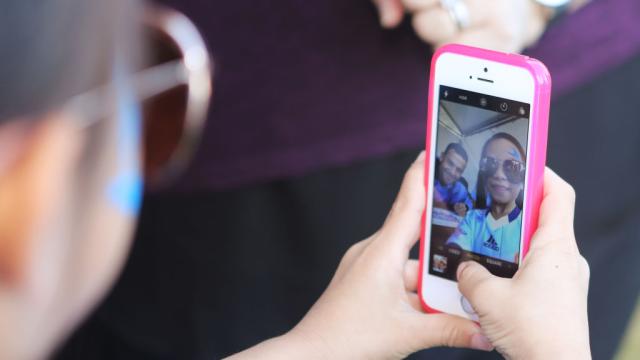In a world where sophisticated Instagram filters enhance photographs and Snapchat filters can add on a full face of makeup, how does someone know when an image is doctored or when it’s unaltered? It’s tough, but one app is here to fight photo fraud by giving its stamp of authenticity for untouched content.
Image from Daniel Munoz
Called Truepic, the startup behind it wants to use its patented photo verification technology to create “the world’s first digital photo notary”, reports TechCrunch.
How to use Truepic
Users download the iOS or Android app and snap a picture or record a video. The app then checks if the content has been modified, and watermarks the untouched photo or video with a timestamp; geocode; and other bits of metadata such as photographer, device, and location where photo are captured. A copy is stored in the app’s digital vault, secured with a six-digit code, and the watermarked image can be exported anywhere.
[referenced url=”https://www.lifehacker.com.au/2010/09/how-to-detect-a-photoshopped-image/” thumb=”https://cache.gawkerassets.com/assets/images/17/2010/09/500x_zuckcomparison.jpg” title=”How To Detect A Photoshopped Image” excerpt=”Photoshop is an amazing tool for altering reality, but it’s only really great when you’re aware of its effects. Here are several tips for detecting a Photoshopped images and earning your digital forensics merit badge.”]
What’s the point?
Being able to verify your photos and videos offers a handful of real world applications. Users can use this app to add credibility when listing items on consumer retail sites like eBay or Craigslist, or even when posting a space on a home rental site like Airbnb. Or the reverse: Consumers can seek out the stamp when checking out listings to be a little more confident in the pics they’re viewing.
The stamp can also serve a noble purpose on dating apps, which are notorious for fake accounts and catfishing. Truepic’s technology catches heavily modified images, so a watermark means a photograph is genuine and not misleading. The timestamp offers validation that the photograph is a recent image of the individual.
It won’t get rid of all fraudulent photos
Without other apps embedding Truepic into their platforms, fraudsters can still, in theory, screenshot and re-use a Truepic-verified image they stumbled upon.
There are others tools (like TinEye, Image Edited, FotoForensics and ImgOps) that allow people to verify if an image has been modified or sourced from the internet. Users can also rely on something more simple and easy to access: A reverse Google image search.
Clearly there are several resources available for a person looking to manually verifying images. But there are few, if any, third party methods for those trying to authenticate their own photos and videos. That’s where Truepic’s strength lies: It lets viewers know the content is real, undoctored and recent, and it allows those sharing content to add a badge of authenticity to their photos and videos.

Comments
One response to “With This App, You Can Finally Trust Photos Again ”
What’s to stop someone uploading a new, pre-altered photo and getting a stamp of authenticity? If they’re able to detect that kind of alteration before photos are uploaded, then we don’t need the metadata registration service, and if they can’t detect pre-alteration, the whole thing becomes kind of worthless, right?
If you have to use their app to take the photos, it’s a bit inconvenient, but you might be able to trick it by taking a photo of an altered photo. Or you could write a dodgy app that uses their API to submit photos after alteration.